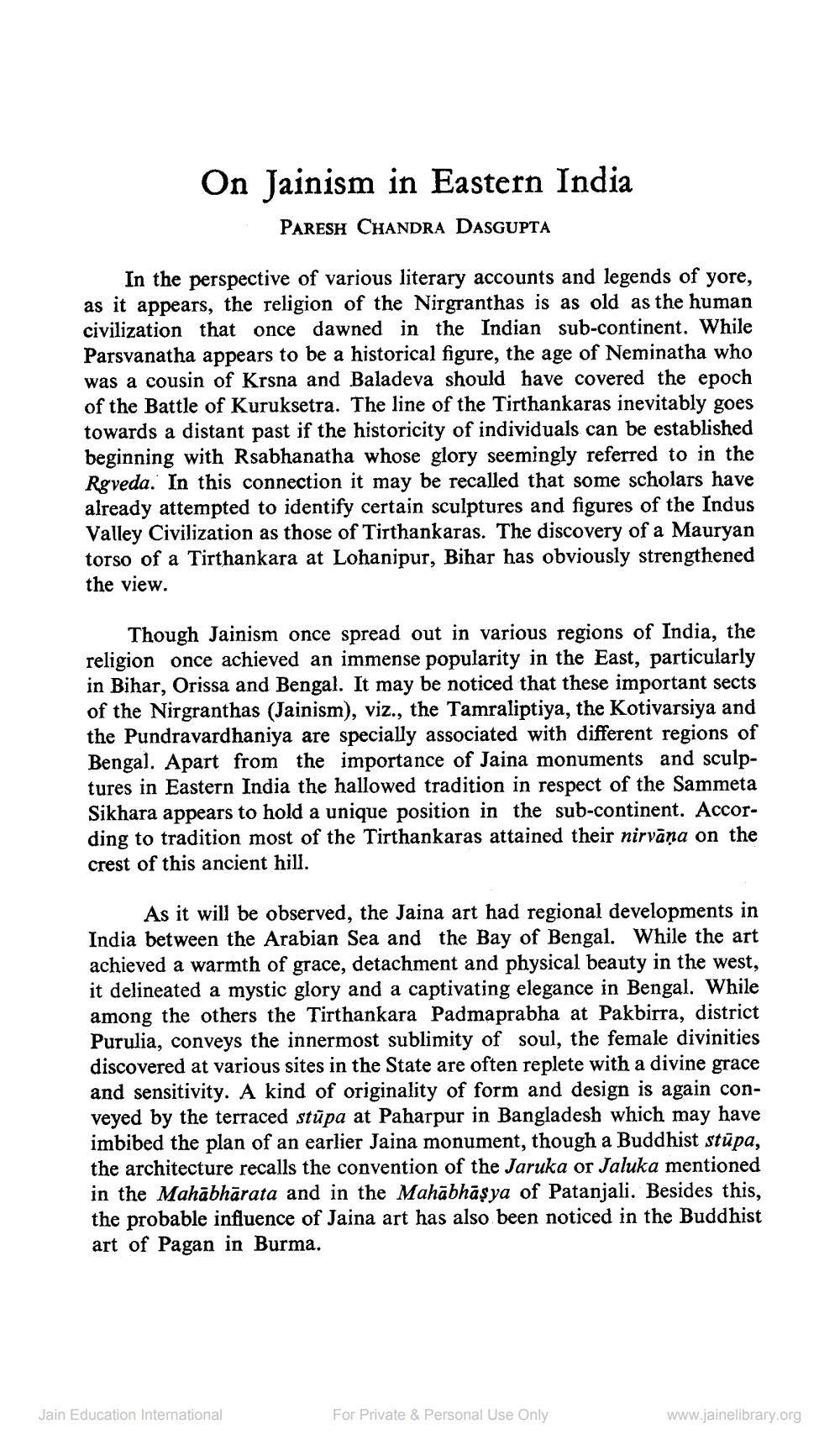Book Title: Jain Journal 1984 04 Author(s): Jain Bhawan Publication Publisher: Jain Bhawan Publication View full book textPage 3
________________ On Jainism in Eastern India PARESH CHANDRA DASGUPTA In the perspective of various literary accounts and legends of yore, as it appears, the religion of the Nirgranthas is as old as the human civilization that once dawned in the Indian sub-continent. While Parsvanatha appears to be a historical figure, the age of Neminatha who was a cousin of Krsna and Baladeva should have covered the epoch of the Battle of Kuruksetra. The line of the Tirthankaras inevitably goes towards a distant past if the historicity of individuals can be established beginning with Rsabhanatha whose glory seemingly referred to in the Rgveda. In this connection it may be recalled that some scholars have already attempted to identify certain sculptures and figures of the Indus Valley Civilization as those of Tirthankaras. The discovery of a Mauryan torso of a Tirthankara at Lohanipur, Bihar has obviously strengthened the view. Though Jainism once spread out in various regions of India, the religion once achieved an immense popularity in the East, particularly in Bihar, Orissa and Bengal. It may be noticed that these important sects of the Nirgranthas (Jainism), viz., the Tamraliptiya, the Kotivarsiya and the Pundravardhaniya are specially associated with different regions of Bengal. Apart from the importance of Jaina monuments and sculptures in Eastern India the hallowed tradition in respect of the Sammeta Sikhara appears to hold a unique position in the sub-continent. According to tradition most of the Tirthankaras attained their nirvana on the crest of this ancient hill. As it will be observed, the Jaina art had regional developments in India between the Arabian Sea and the Bay of Bengal. While the art achieved a warmth of grace, detachment and physical beauty in the west, it delineated a mystic glory and a captivating elegance in Bengal. While among the others the Tirthankara Padmaprabha at Pakbirra, district Purulia, conveys the innermost sublimity of soul, the female divinities discovered at various sites in the State are often replete with a divine grace and sensitivity. A kind of originality of form and design is again conveyed by the terraced stupa at Paharpur in Bangladesh which may have imbibed the plan of an earlier Jaina monument, though a Buddhist stūpa, the architecture recalls the convention of the Jaruka or Jaluka mentioned in the Mahabharata and in the Mahabhāṣya of Patanjali. Besides this, the probable influence of Jaina art has also been noticed in the Buddhist art of Pagan in Burma. Jain Education International For Private & Personal Use Only www.jainelibrary.orgPage Navigation
1 2 3 4 5 6 7 8 9 10 11 12 13 14 15 16 17 18 19 20 21 22 23 24 25 26 27 28 29 30 31 32 ... 67
